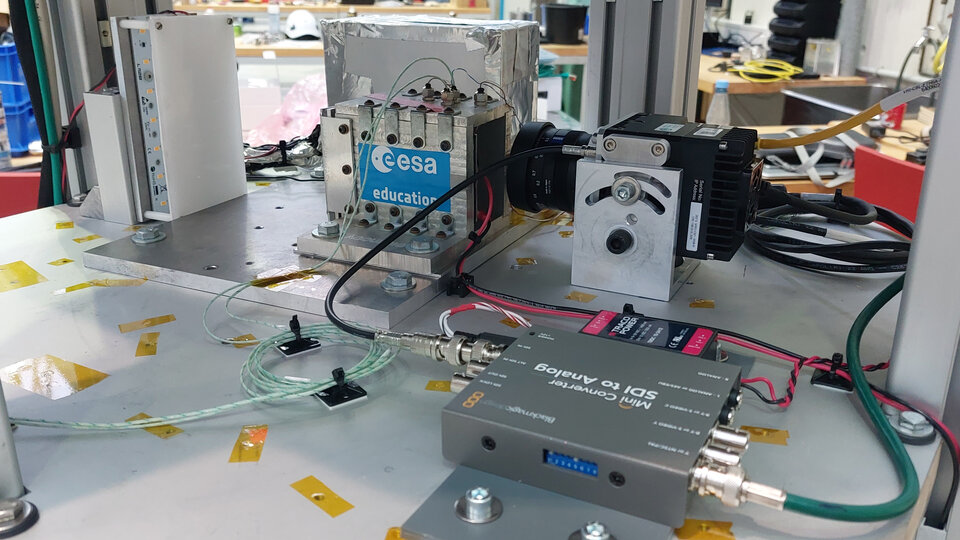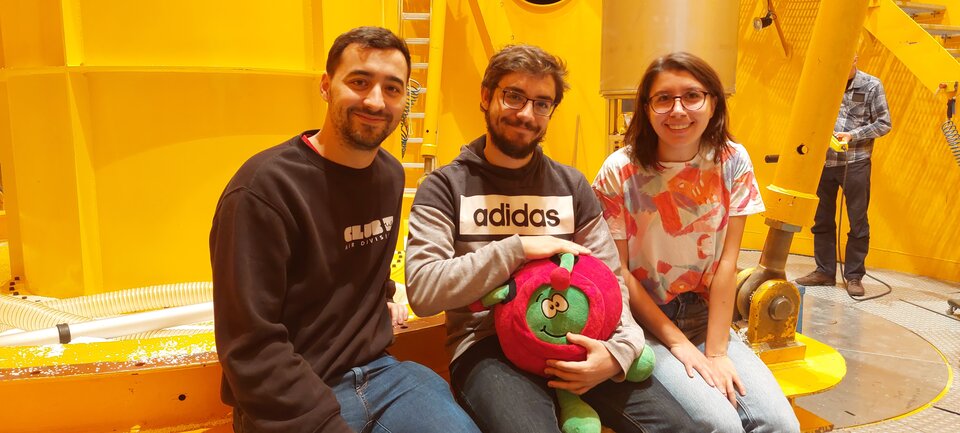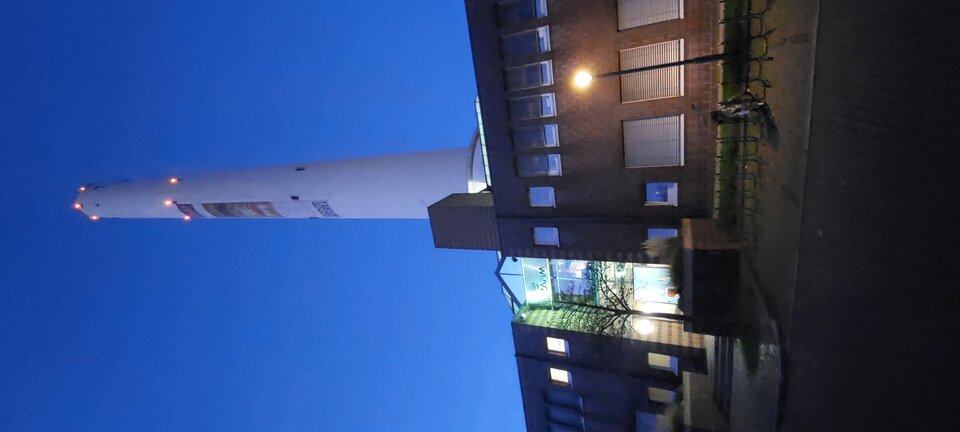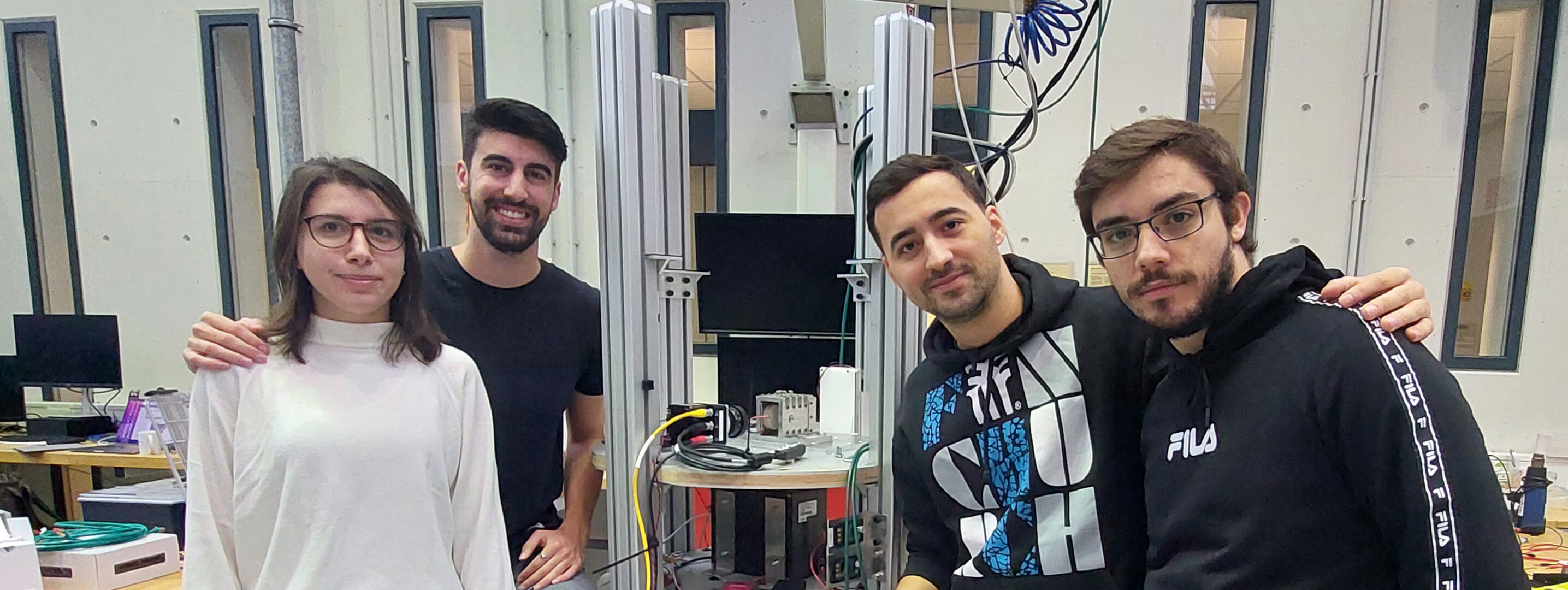A cool campaign for Acouling team
In brief
Students from Polytechnic University of Catalonia just finished an experimental campaign in the ZARM Drop Tower in Bremen, Germany, where they used sound waves to dissipate heat.
In-depth

On Earth, in the presence of gravity and air, convection forces play a very big role in heat dissipation due to the fact hot air rises, thus removing heat from the source. In conditions where there is little gravity, such as in space or in free fall, there is little to no convection meaning instruments and electronics can heat up very quickly and other methods must be used to maintain the correct temperature. In pressurized environments such as in the International Space Station this lack of convection is counteracted by having a constant airflow with fans circulating air over hot electronic components. Fans are composed of moving parts which are subject to failure and therefore the students wanted to investigate the phenomenon of using sound (acoustic) waves to remove energy from the areas surrounding a heat source in the absence of any meaningful gravity forces.
To investigate the phenomenon of sound wave cooling in the absence of gravity, the team of 5 masters students applied one year ago to the Drop Tower opportunities offered by ESA Academy as part of their hands-on offerings to university students. After selection, the students started designing their experiment with regular reviews from ESA and ZARM engineers.

Over time the team consolidated a solid design that would withstand the forces in the Drop Tower and also provide them with the data they sought. In brief, the hardware consisted of a powerful heater and a piezo electric unit to generate the sound waves. To detect the heat dissipation, two systems were devised, a visual one making use of a type of Schlieren photography that relies on the difference in refractive index in hot and cold air and an array of thermocouples at precise distances from the heat source. In this manner the students could precisely measure the differences in heat with and without the acoustic waves in an environment where convection is negligible.
To maximise their time in microgravity, the students opted for the impressive catapult mode which accelerates their experiments upwards into the tower before it falls back down into a deceleration pit. This ‘catapult’ mode essentially doubles the nominal ‘drop’ mode time of 4.7 seconds to 9.3 seconds in 10-6g. All drops went as expected even though some of the thermocouple data was noisier than expected. The team has travelled back to Barcelona and will spend the next few weeks analysing the data to determine how efficient their acoustic cooling method is.

The Drop Tower platform for student experiments offers an educational experience that introduces students to professional industry standards and environment. As of 2022, this opportunity in encompassed in the “Practical Education in Technology, Research and Innovation” (PETRI) programme of ESA Academy.
PETRI allows student teams to gain a unique practical experience and training with the European Space Agency and partners which complements and enhances university students’ academic journey. It is a first-hand exposure to the professional world of research and development of space science and technology. Teams are guided through all the steps of developing their project from concept to operations and data analysis, including industry standard engineering practices, good project management, risk mitigation and effective fundraising techniques. The programme offers multiple platforms to conduct the experiment: the Large Diameter Centrifuge, the ZARM Drop Towers, the Parabolic flight and the ICECubes Facility on board the International Space Station.
As a direct consequence of the research students conducted during past campaigns, many have so far been able to present their results at international conferences and/or to publish papers in leading scientific journals. The experience gained is an important addition to students’ curriculum vitae and increases their chance of being elected for future professional opportunities.
You can check for current opportunities within the ESA Academy here and within the PETRI programme here.


